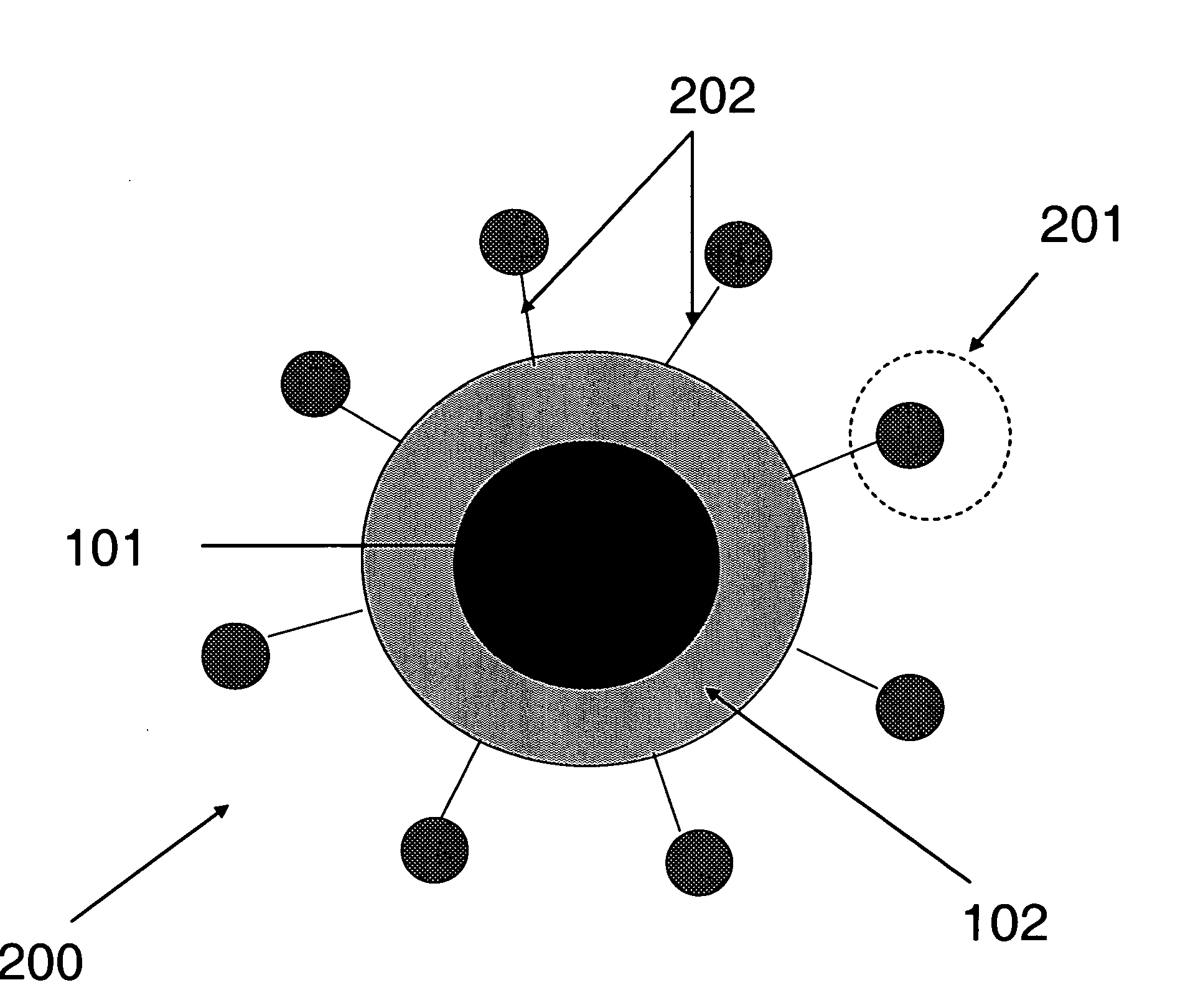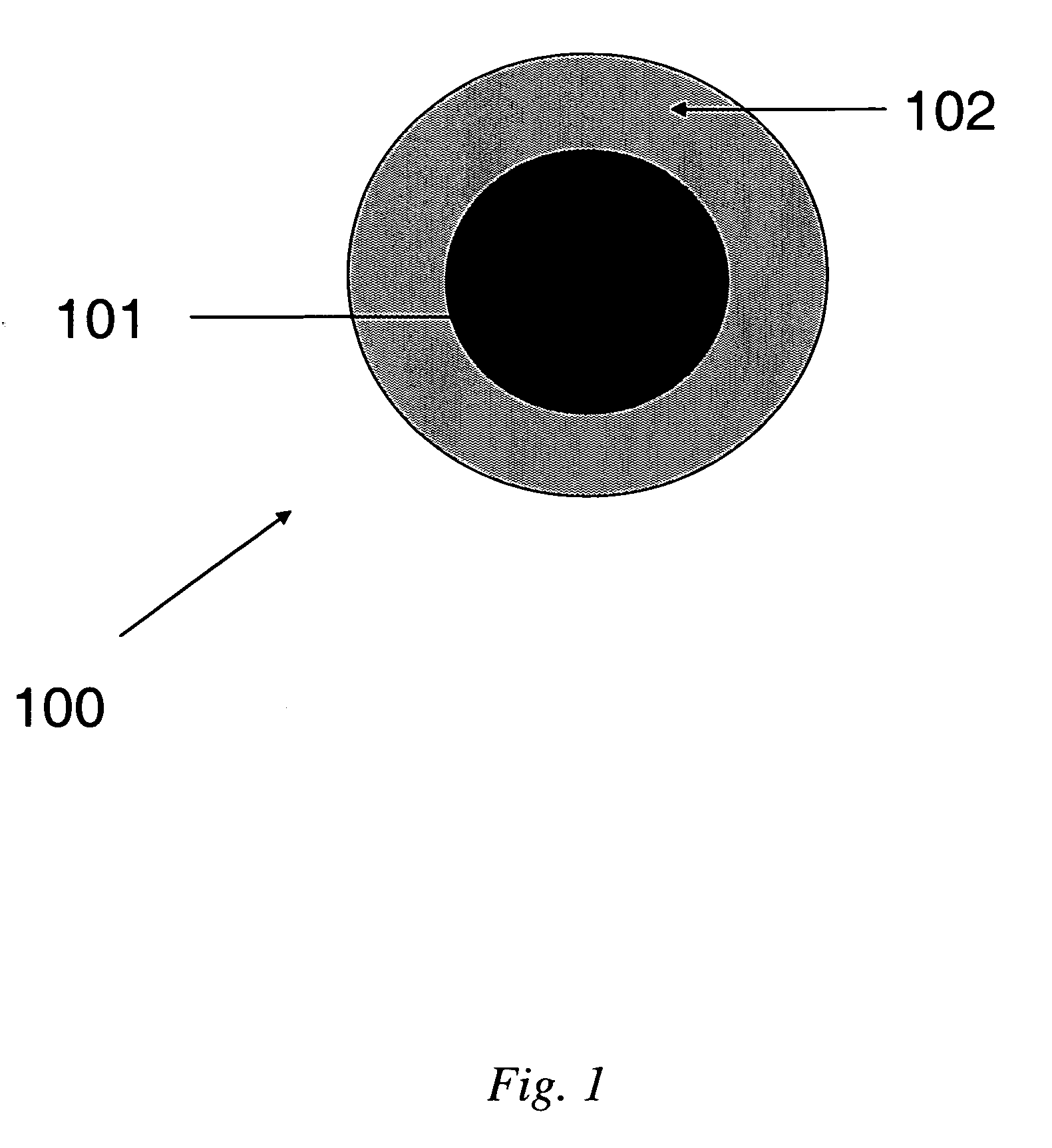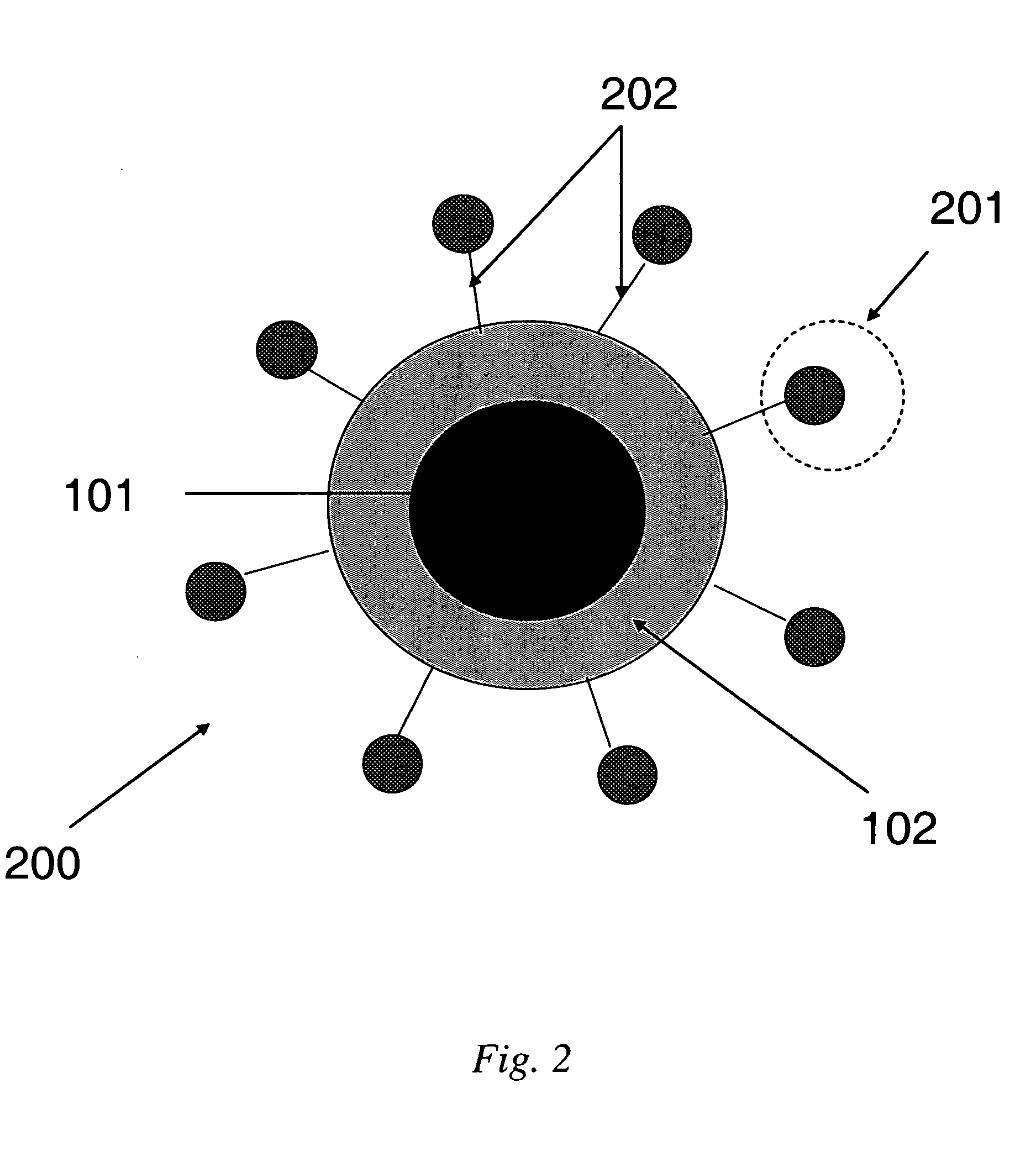Targeted nanoparticles for magnetic resonance imaging
- Summary
- Abstract
- Description
- Claims
- Application Information
AI Technical Summary
Benefits of technology
Problems solved by technology
Method used
Image
Examples
example 1
[0045] This Example illustrates the synthesis and characterization of SPIO nanoparticles and preparation of PEI-silane coated SPIO nanoparticles.
[0046] Synthesis of 5 nm SPIO nanoparticles. A 25 mL, 3-neck Schlenk flask was fitted with a condenser, stacked on top of a 130 mm Vigreux column, and a thermocouple. The condenser was fitted with a nitrogen inlet and nitrogen flowed through the system. The Schlenk flask and Vigreux column were insulated with glass wool. Trimethylamine-N-oxide (Aldrich, 0.570 g, 7.6 mmol) and oleic acid (Aldrich: 99+%, 0.565 g, 2.0 mmol) were dispersed in 10 mL of dioctylether (Aldrich: 99%). The dispersion was heated to 80° C. at a rate of about 20° C. / minutes. Once the mixture had reached ˜80° C., 265 μL of Fe(CO)5 (Aldrich: 99.999%, 2.0 mmol) was rapidly injected into the stirring solution through the Schlenk joint. The solution turned black instantaneously, with a violent production of a white “cloud.” The solution rapidly heated to ˜-120-140° C. Withi...
example 2
[0050] This Example illustrates attachment of peptides to PEI-coated siloxane core / shell nanoparticles. Polyethylene imine-coated siloxane core / shell naonoparticles are conjugated to N-acelyated peptides utilizing EDC. The reaction takes place in 0.1M MES, pH 4.5-5, as depicted in the synthetic scheme of FIG. 4. The polyethylene imine (PEI)-coated core / shell nanoparticles have numerous available secondary amines for coupling to N-acetylated peptides with the amount of conjugation controlled to achieve maximum binding efficiency to the biological target, as depicted in FIG. 5.
example 3
[0051] This Example is illustrative of cell uptake studies. NHS ester-Cypher5E dye was covalently bound to the PEI-coated nanoparticles. These amine-coupled dyes indicate the uptake of these nanoparticles into phagocytic cells and demonstrate the utility of the free amines of the PEI coating for attachment using NHS ester chemistry (similar to coupling chemistry for peptide, etc). Peptides can be coupled to these particles in a similar manner for uptake in non-phagocytic disease-specific cells expressing biomarkers of interest for diagnosis. FIG. 6 is a micrograph of MRI contrast agents comprising NHS ester-Cypher5E dye covalently bound to the PEI-coated nanoparticles and delivered to phagocytic cells stained with Cell Tracker Green dye, in accordance with some embodiments of the present invention.
[0052] Peptide-functionalized cationic nanoparticles could also deliver oligonucleotides to disease-specific sites for therapeutic or diagnostic purposes.
PUM
| Property | Measurement | Unit |
|---|---|---|
| Nanoscale particle size | aaaaa | aaaaa |
| Hydrodynamic diameter | aaaaa | aaaaa |
| Hydrodynamic diameter | aaaaa | aaaaa |
Abstract
Description
Claims
Application Information
 Login to View More
Login to View More - R&D
- Intellectual Property
- Life Sciences
- Materials
- Tech Scout
- Unparalleled Data Quality
- Higher Quality Content
- 60% Fewer Hallucinations
Browse by: Latest US Patents, China's latest patents, Technical Efficacy Thesaurus, Application Domain, Technology Topic, Popular Technical Reports.
© 2025 PatSnap. All rights reserved.Legal|Privacy policy|Modern Slavery Act Transparency Statement|Sitemap|About US| Contact US: help@patsnap.com



